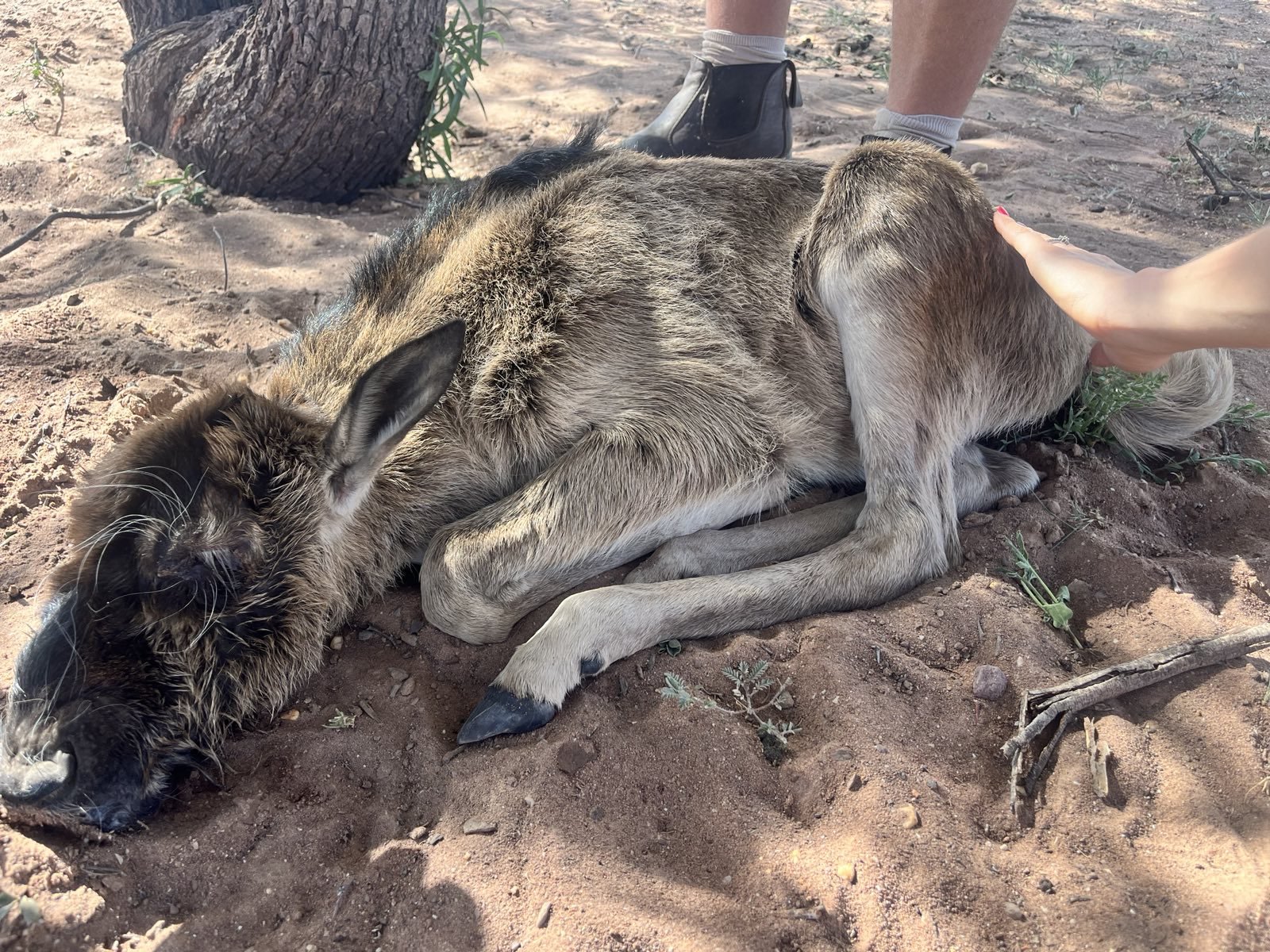Witnessing the Circle of Life at Rhino Ridge
Working with wildlife is both a blessing and a powerful reminder that nature follows its own rules and rhythms, as our encounter with a newborn wildebeest just before Christmas showed once again.
Working with wildlife, nature, and conservation is incredibly enriching, especially now that we've had some rain and are welcoming newborns every day. The vibrant landscapes of the savanna come alive as new life emerges, bringing joy and a sense of hope. However, this beauty is often accompanied by the harsh realities of nature.
Just before Christmas, we discovered a newborn wildebeest alone in the bushes. Wildebeest calves are born highly precocial, able to stand and walk within 10 to 15 minutes—a crucial ability for survival in a predator-rich environment. Despite this adaptation, the little one we found was lying down, barely able to move. Scratch marks on his body suggested he might have been attacked by a jackal or hyena.
In an effort to save him, we laid him under the shade of a tree and fed him with a bottle every few hours, hoping his mother would return. After a day passed with no sign of her, we took him to the farmhouse for closer care. One of our dachshunds fiercely protected him during this time. However, later that day, he stopped breathing.
Now, weeks later, we see the other wildebeest born at the end of last year running around joyfully, tails circling in the air. This poignant experience reminds us that nature teaches us about the continuous cycle of life; with each new beginning, we also encounter the inevitability of loss.
Fascinating Facts About Wildebeests
Wildebeests play a vital role in their ecosystems. Here are some intriguing facts about them:
Keystone Species: Wildebeests are considered a keystone species in the plains and acacia savannah ecosystems across southeastern Africa to central Kenya. Their annual migrations help maintain grassland health and nutrient cycling.
Synchronized Birthing: The birthing season for wildebeests is highly synchronized; approximately 80% of calves are born within a short period at the start of the rainy season. This strategy maximizes survival chances by overwhelming predators with sheer numbers.
Precocial Calves: Newborn wildebeest calves can stand and run within minutes of birth. This ability is essential for evading predators that roam their habitat.
Migration Patterns: Wildebeests undertake long-distance migrations in search of food and water, timed with seasonal rainfall patterns. These migrations can cover hundreds of miles and involve crossing dangerous rivers.
Predator-Prey Dynamics: Wildebeests are central to the savanna's predator-prey dynamics. They support a variety of predators such as lions, leopards, and crocodiles. Their presence helps maintain ecological balance.
Impact on Ecosystems: As they graze on vegetation, wildebeests prevent overgrowth and promote biodiversity. Their droppings act as natural fertilizer, enriching the soil and supporting other plant and animal life.
Threats to Survival: Despite their stable population status classified as "least concern" by the IUCN Red List, wildebeests face threats from habitat loss due to agriculture, migration barriers like fences, and illegal hunting.



